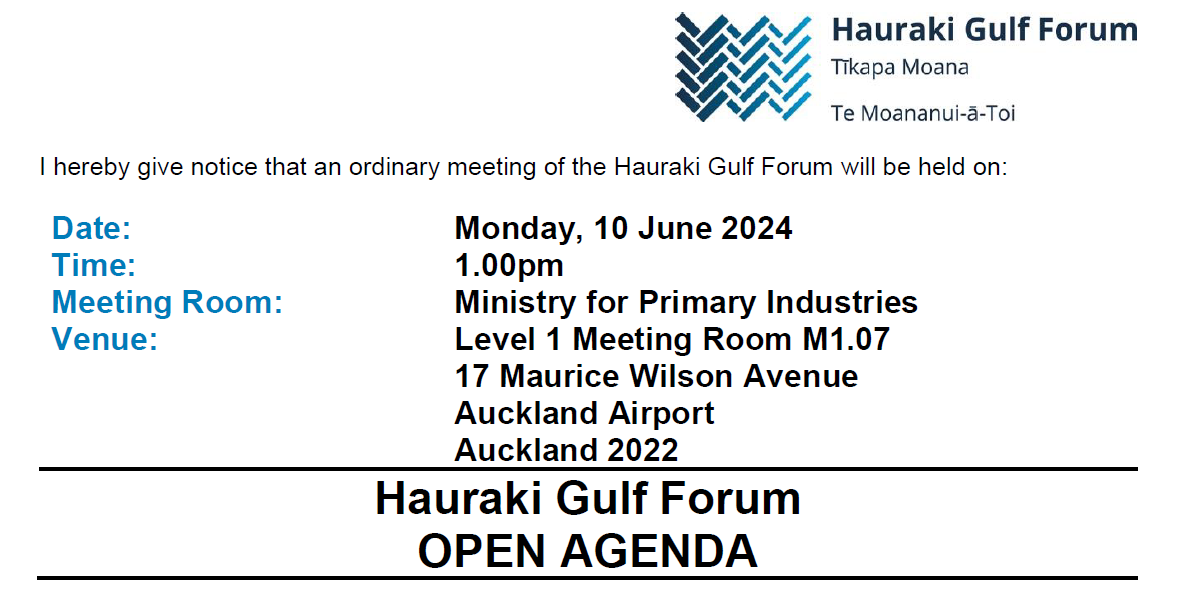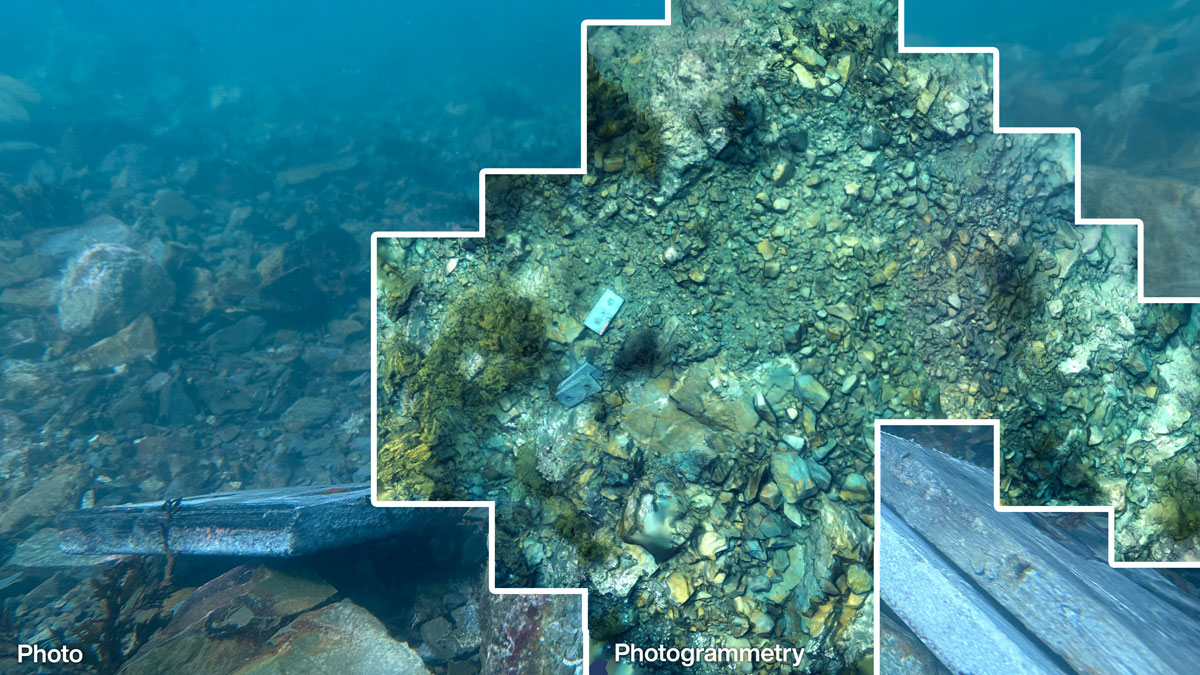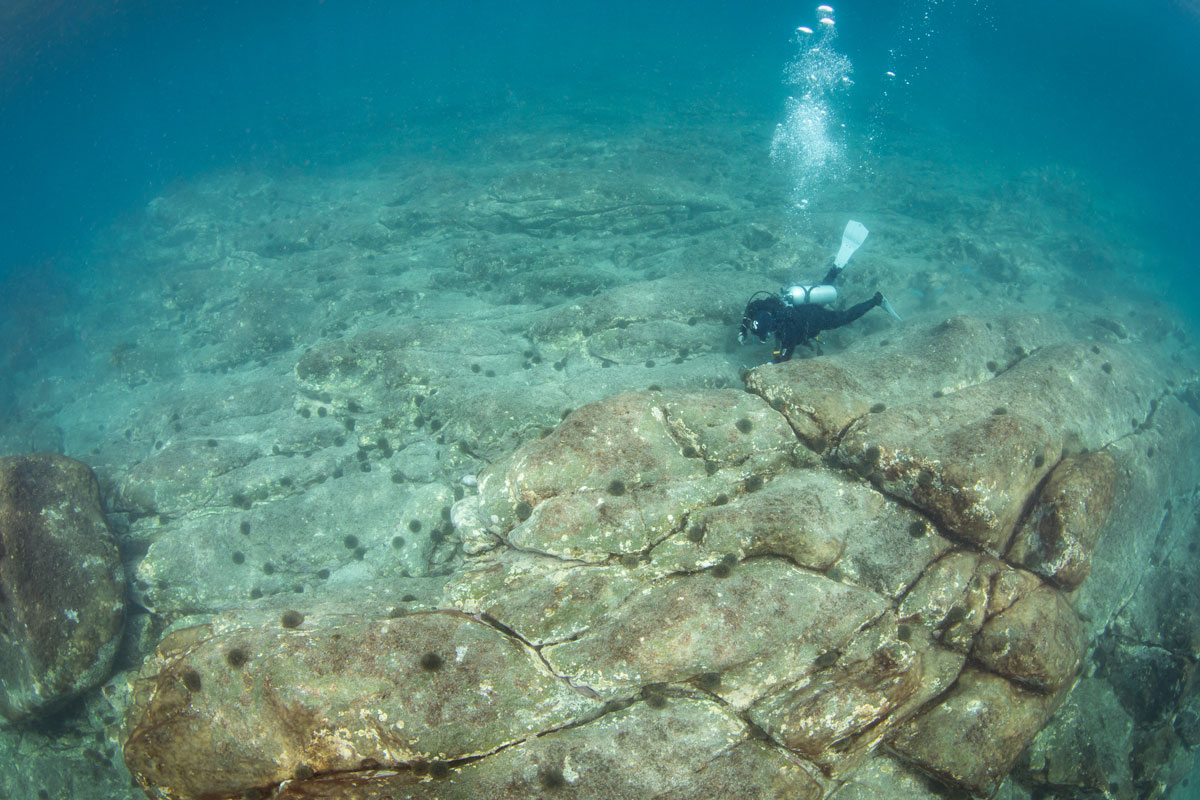Invasive species or ‘pests’ pose a significant threat to native biodiversity and have large economic impacts. For example, in Aotearoa New Zealand, pest defence, control, and damage to the primary sector were estimated to cost our economy $9.2 billion – 2.9% of GDP – over the 2019/2020 period alone. While most of us are familiar with the impacts of terrestrial pests such as the brushtail possum, rats, and kauri dieback, many of us are less familiar with the pests that threaten our marine environment.
Exotic seaweeds Caulerpa brachypus and Caulerpa parvifolia have been detected at Aotea/Great Barrier Island and Ahuahu/Great Mercury Island, posing a high biosecurity threat to the Hauraki Gulf/Tīkapa Moana/Te Moananui-ā-Toi.
Both seaweed species are native to the Indo-Pacific region, and they are popular in the aquarium trade overseas. However, the seaweeds have the potential to spread and grow into large meadows very rapidly when introduced to regions outside of their natural range. For example, Caulerpa brachypus has established populations in Florida and the Caribbean, where it is considered an invasive marine pest.
The seaweeds behave similarly to terrestrial weeds in that they smother native seaweeds, which has negative impacts on marine invertebrates and fish that depend on these habitats. They can also change the sediment chemistry, which has knock-on effects on the broader ecosystem.
There is currently a Controlled Area Notice and rāhui in some areas of Aotea/Great Barrier Island – Tryphena, Whangaparapara and Blind Bay, and the western bay area between Ahikopua Point and Maunganui Point on Ahuahu/Great Mercury Island. Strict rules are in place as part of the biosecurity response to stop the spread of Caulerpa, including:
- Taking any marine life (fish, shellfish, crayfish, and seaweed) is prohibited in all four areas.
- At Aotea, you need a permit to pull up anchor and leave the controlled areas, and you must remove all visible plant material and thoroughly clean your anchor and chain before leaving.
- All equipment used for water-based activities must be cleaned thoroughly, such as kayaks and diving equipment.
- Please refer to the MPI biosecurity information page for more about Caulerpa and the biosecurity response.

Other marine pests Hauraki Gulf
Below is a list of marine pests detected or potentially present in the Hauraki Gulf. Auckland Council provides descriptions of each of these species and how you can help stop the spread of marine pests.
- Wakame (Asian kelp)
- Mediterranean fanworm
- Australian droplet tunicate
- Clubbed tunicate/leathery sea squirt
- Asian paddle crab
- Carpet sea squirt
The rise of introduced species in the era of globalisation
The spread of non-native species around the globe is due to the globalisation of trade and travel – transport provides species with the opportunity to hitchhike far and wide to regions outside their natural range. With maritime transportation accounting for over 90% of international trade and a rise in maritime activities, marine pests pose one of the greatest threats to native marine ecosystems. As a result, biologically rich regions that are the centre of various maritime activities, such as the Hauraki Gulf, are at a high risk of biological invasions.
Not all introductions are bad – each species presents a biosecurity risk profile, which depends on its physiological and biological capacity to thrive in our marine environment. For example, some non-native species that arrive on our shores do not survive as they have evolved to tolerate different climatic conditions, such as the balmy temperatures of tropical waters. Other introduced species may have the capacity to establish small local populations but lack the ‘competitive edge’ necessary to become a pest. However, non-native species from a temperate environment similar to Aotearoa that possess biological traits that make them fierce competitors or predators can drive native species to extinction and cause irreversible ecological damage. Moreover, non-native species can carry non-native pathogens that cause concern to fisheries and aquaculture sectors.
Once transported to a new region, introduced marine species can spread to new places via currents or are transported in the ballast water of cargo ships or on the hulls or anchor chains of recreational boats. The spread can happen very rapidly, so detection and containment are paramount to controlling the spread of unwanted species. Containment of an introduced species requires a collective effort – and requires recreational boat operators to be aware of the biofouling and marine biosecurity rules, which you can find here.





